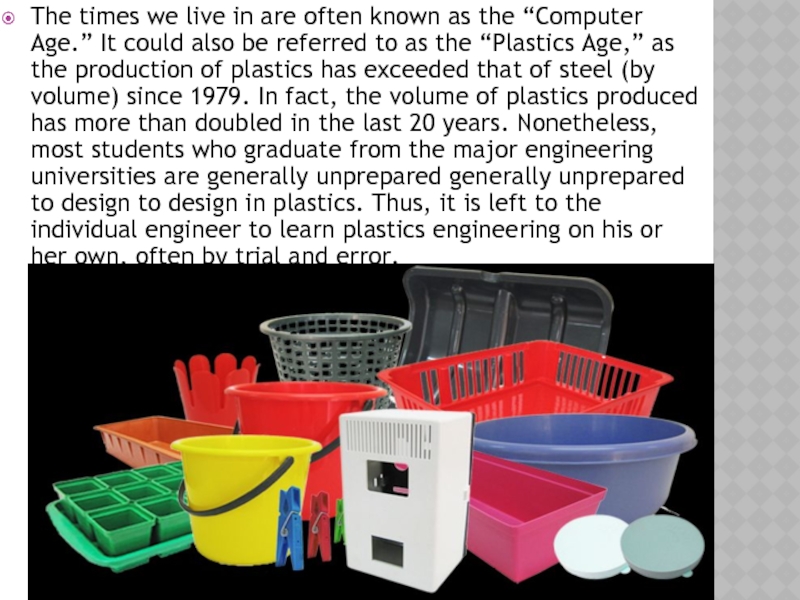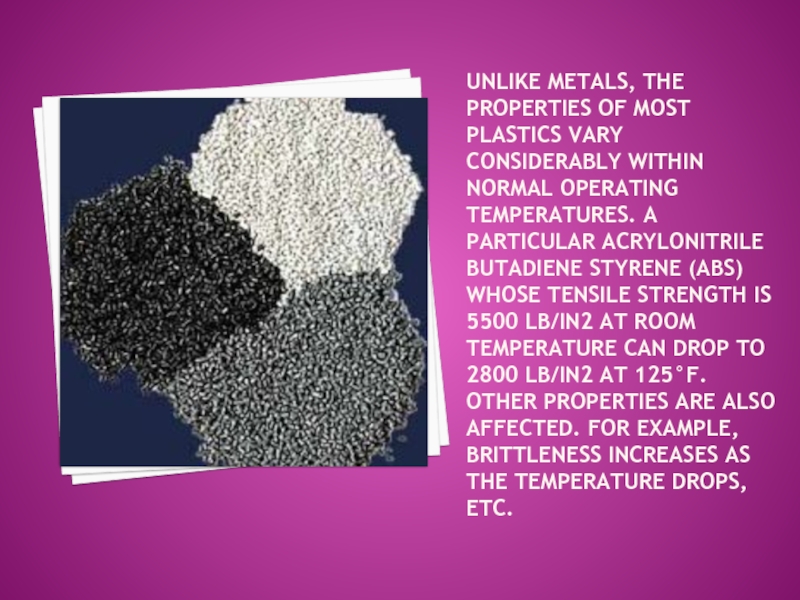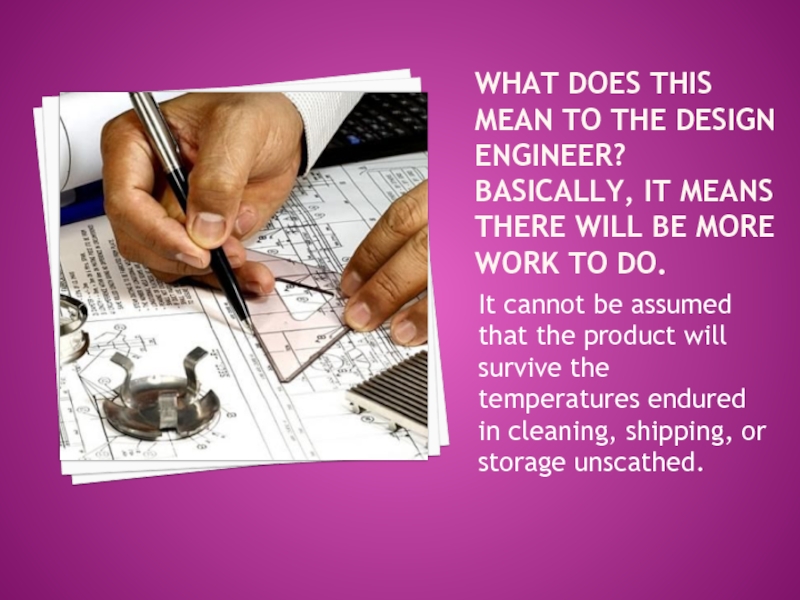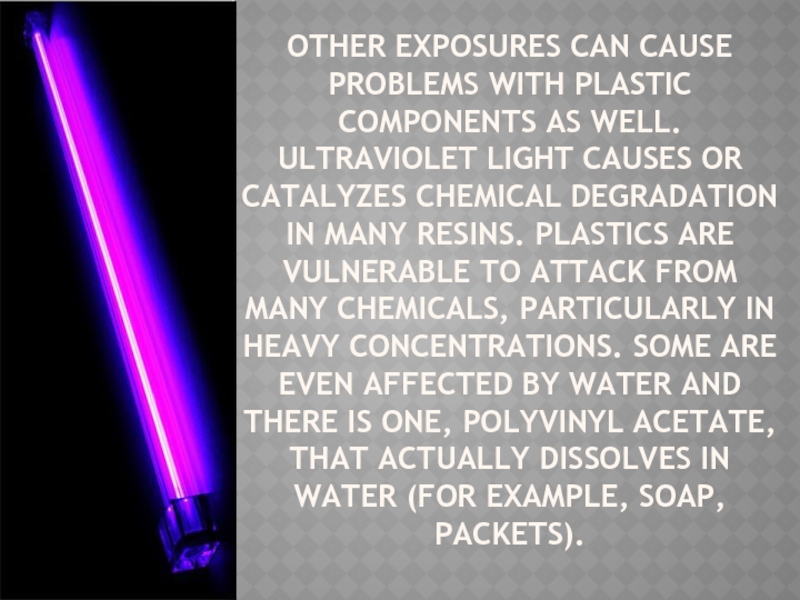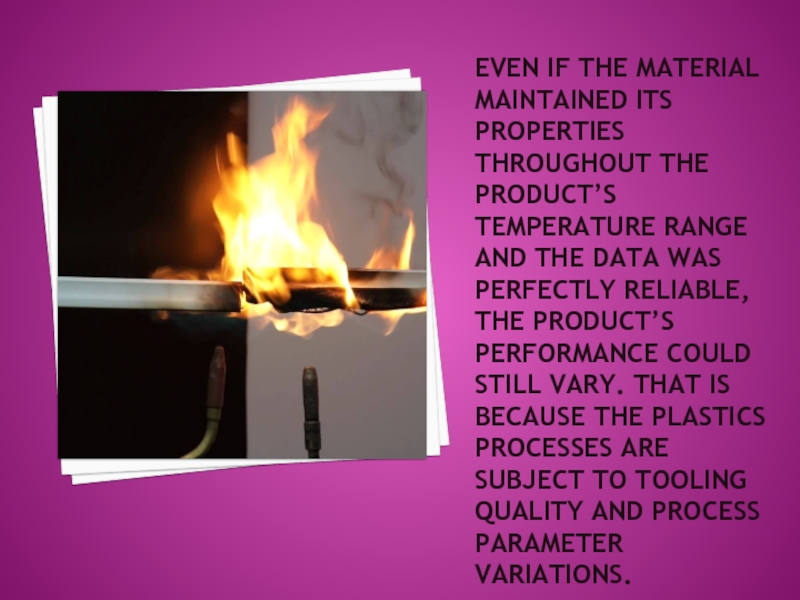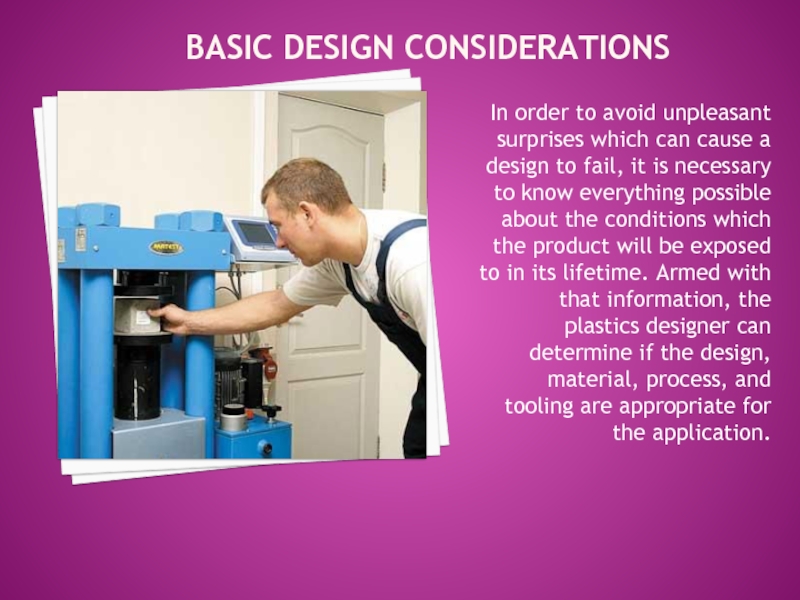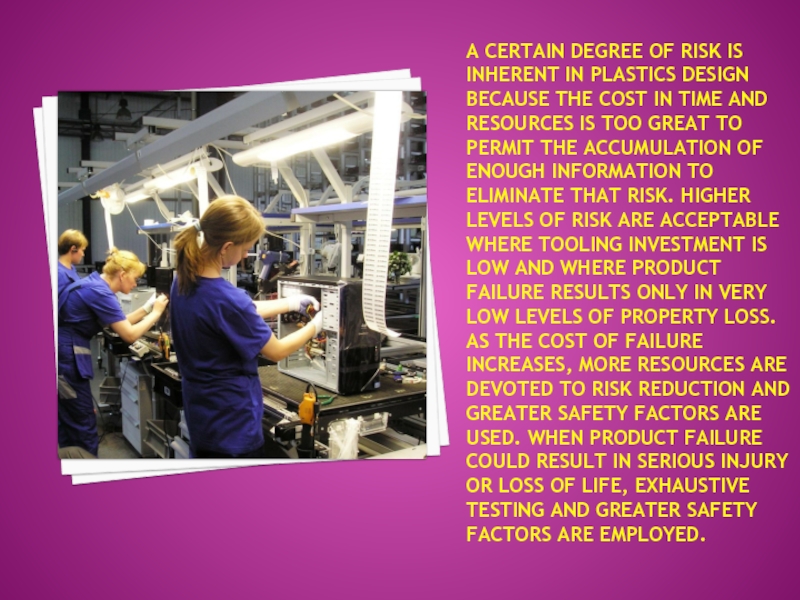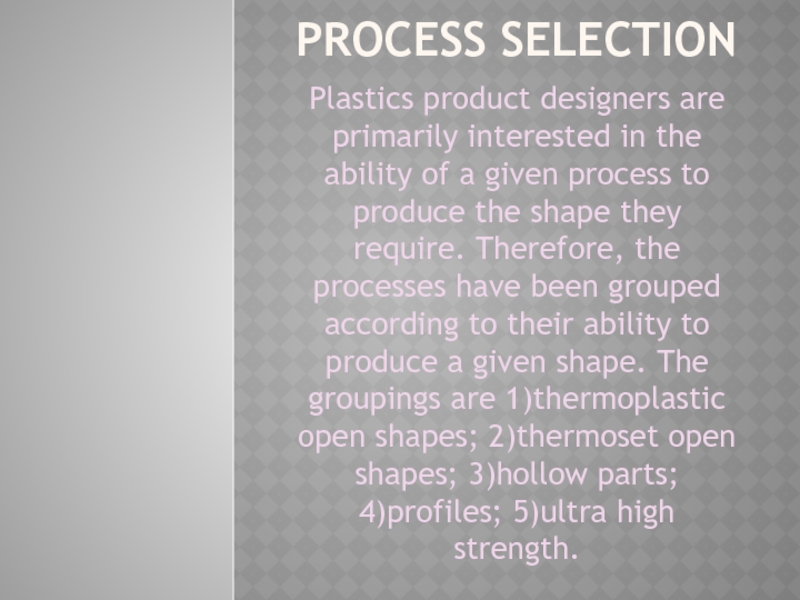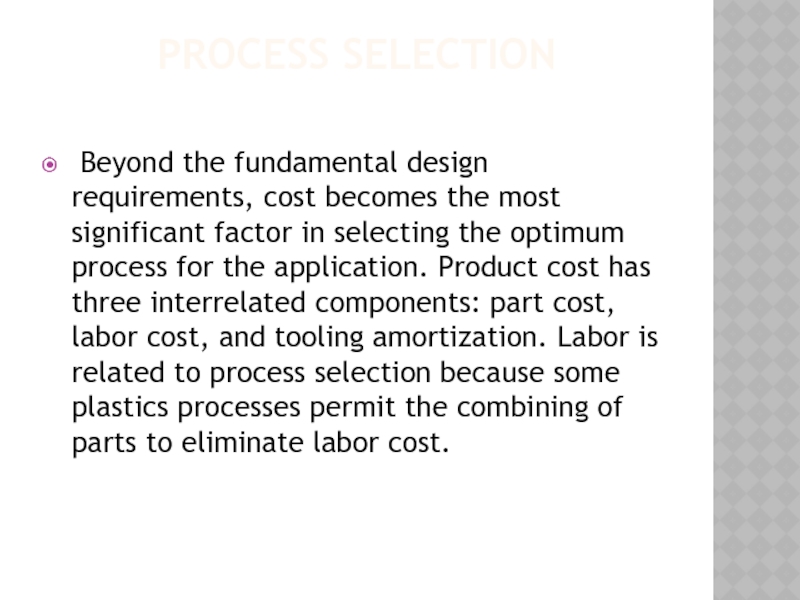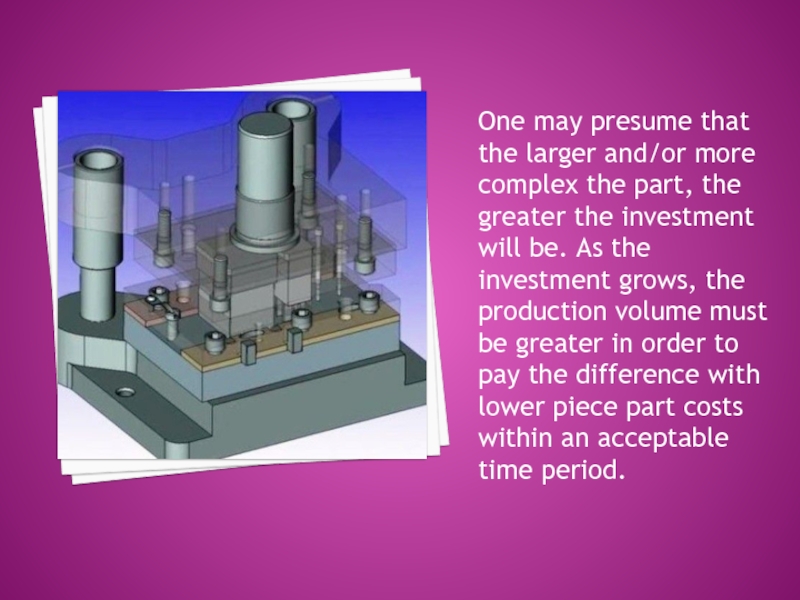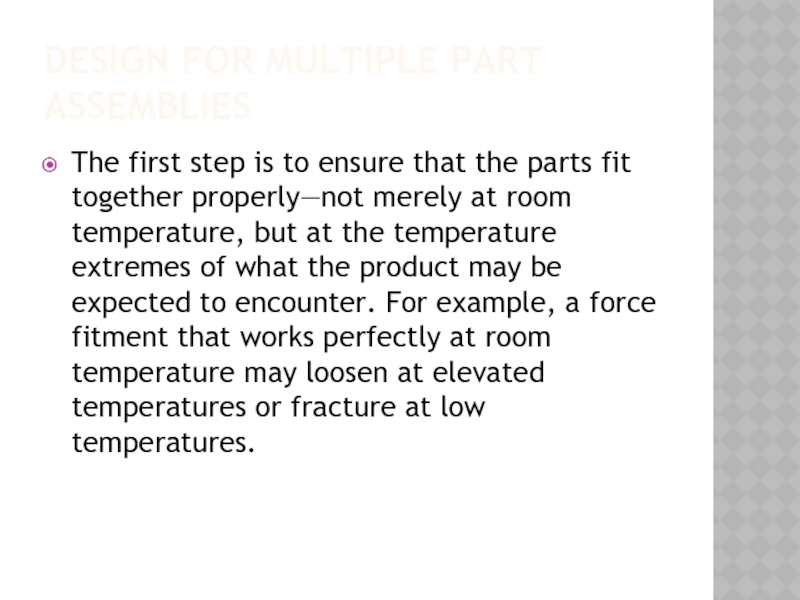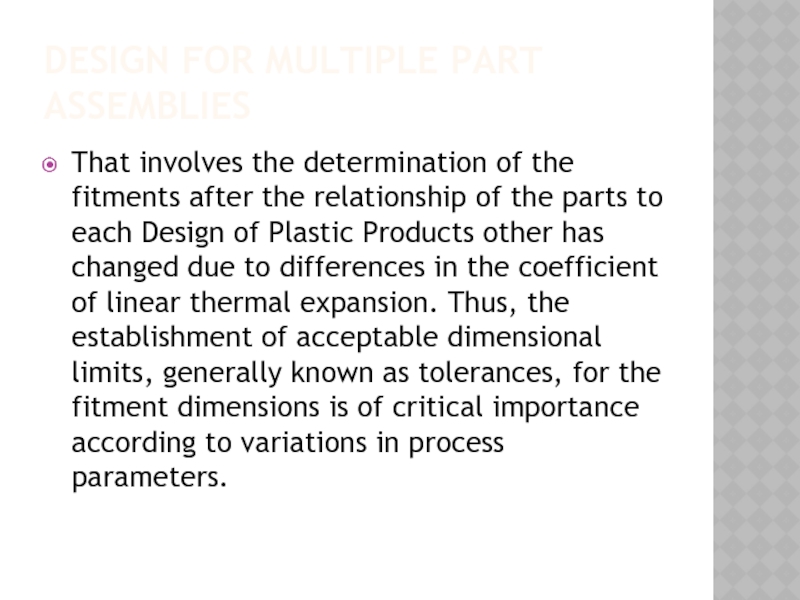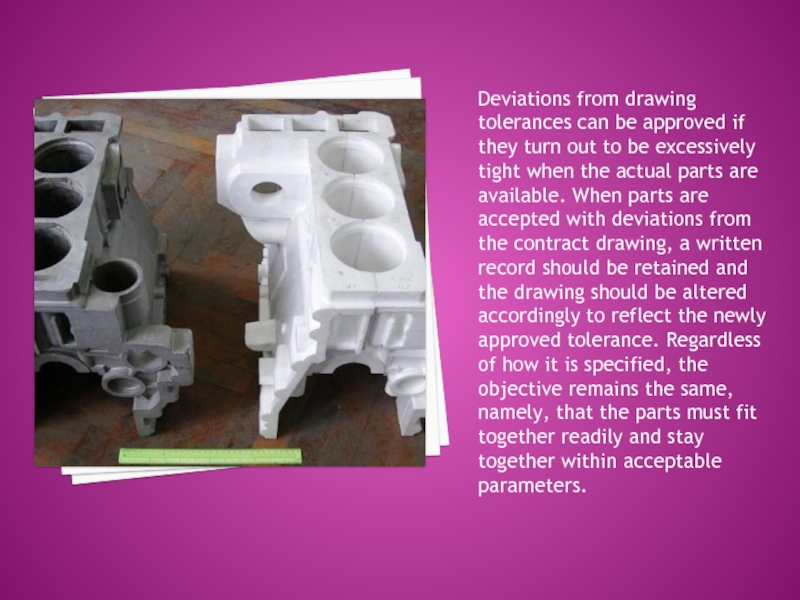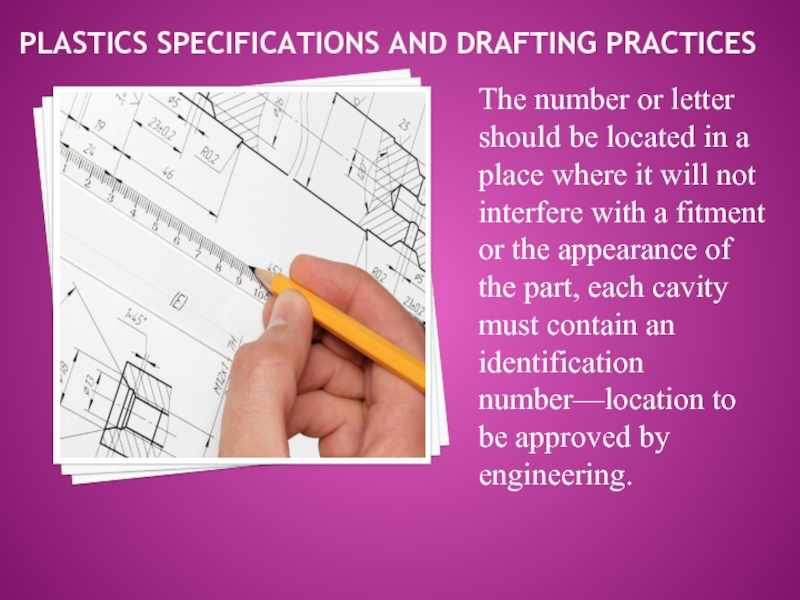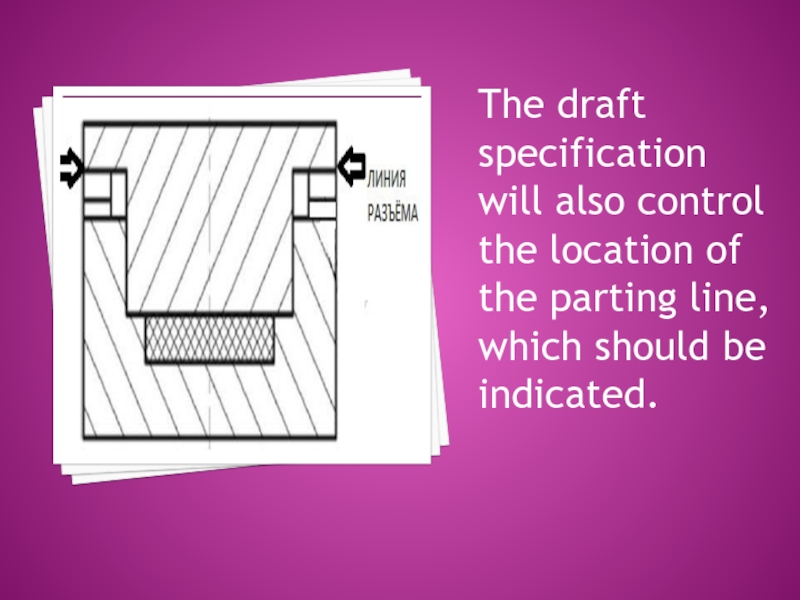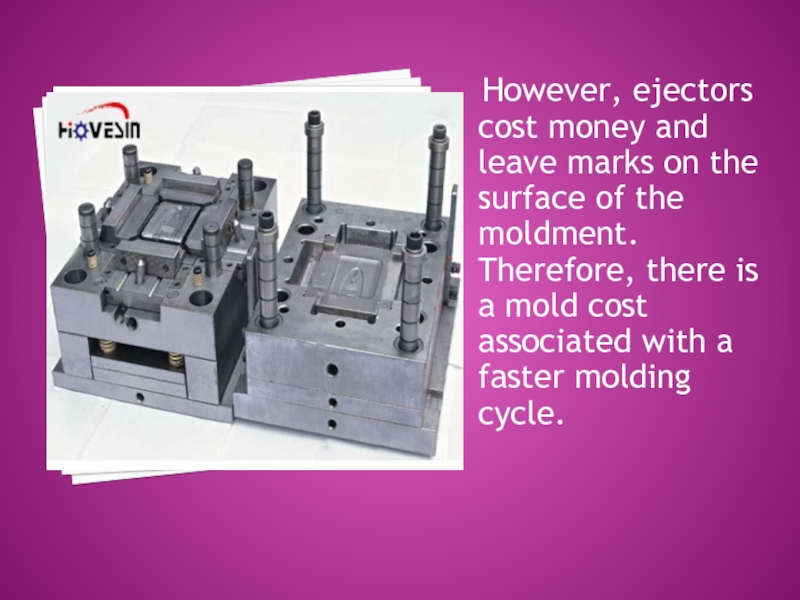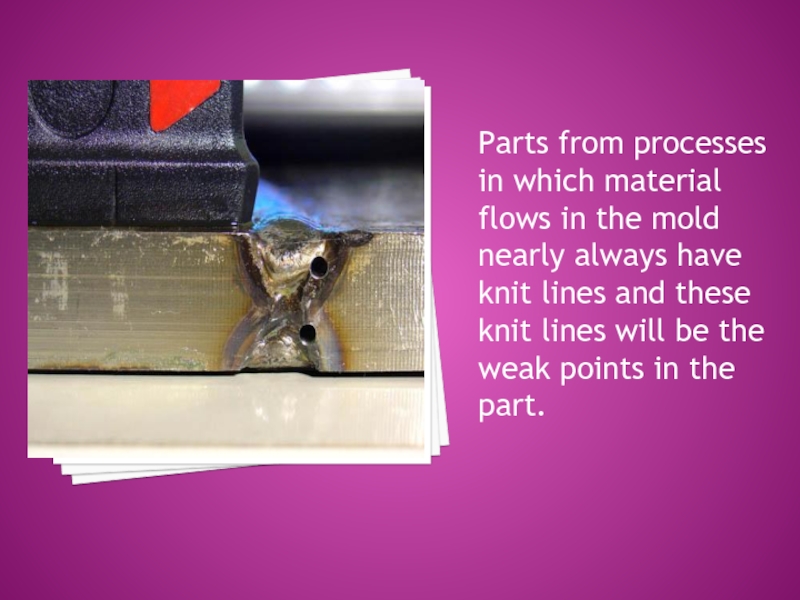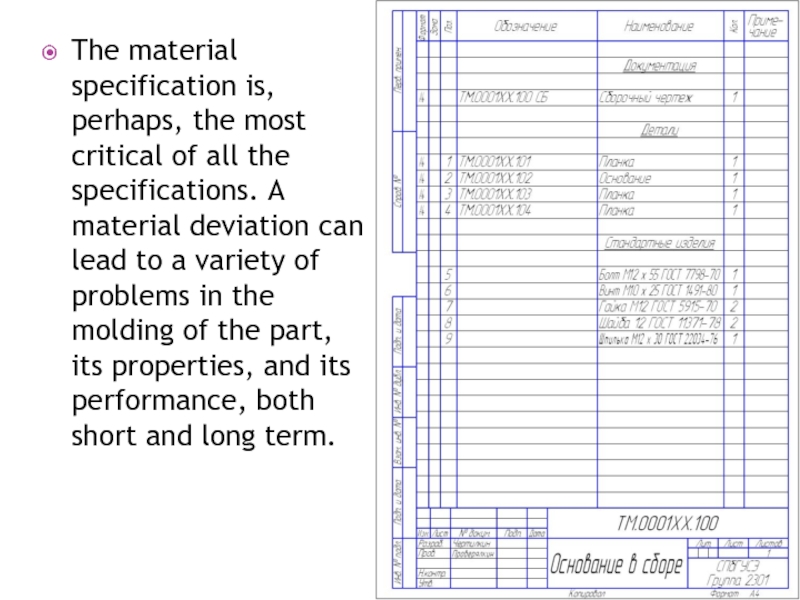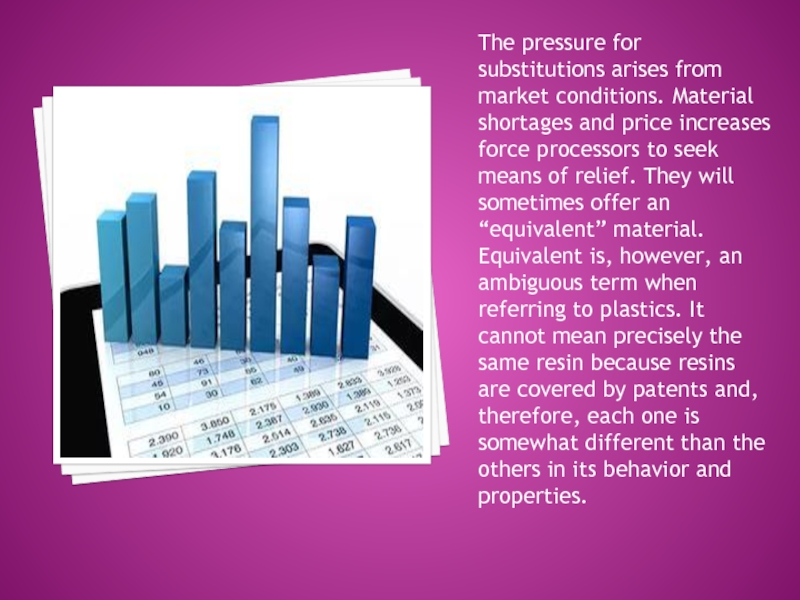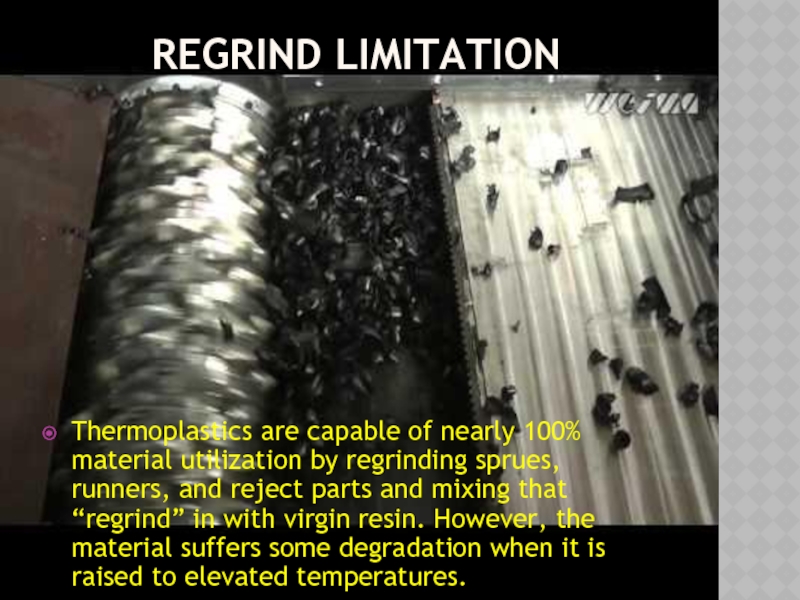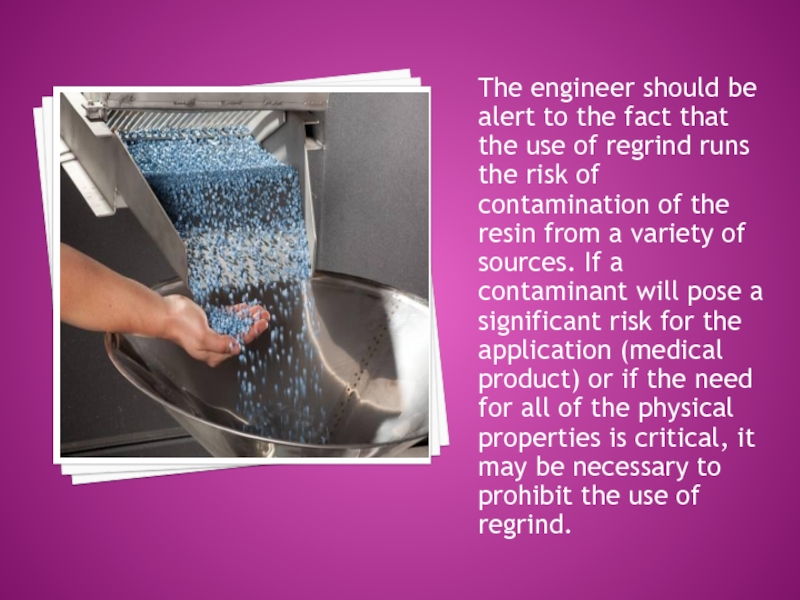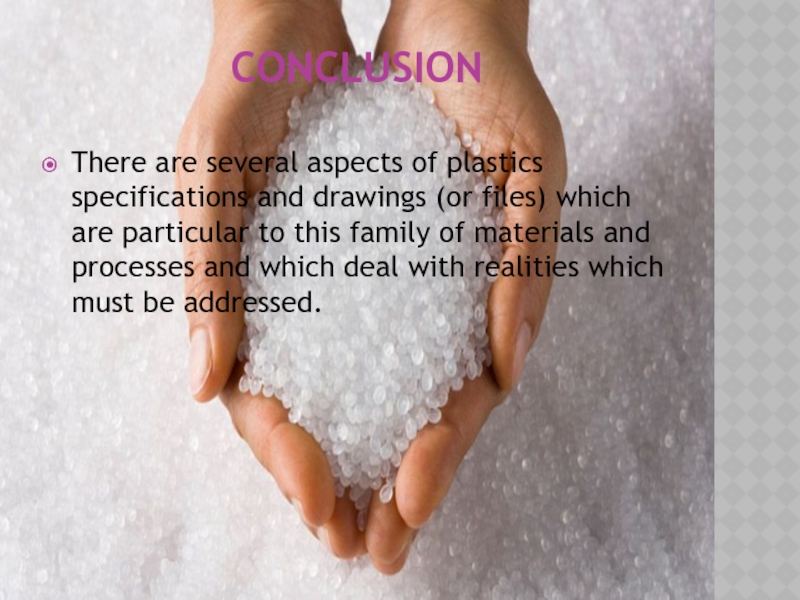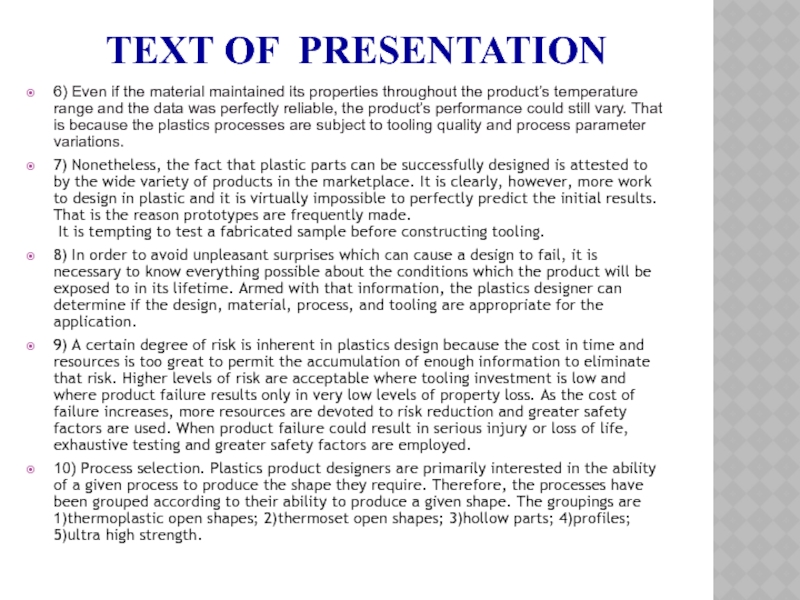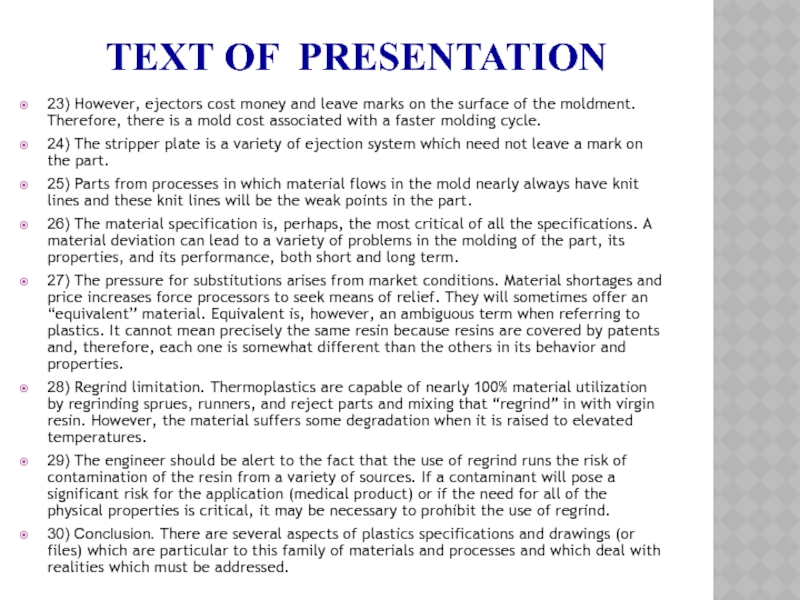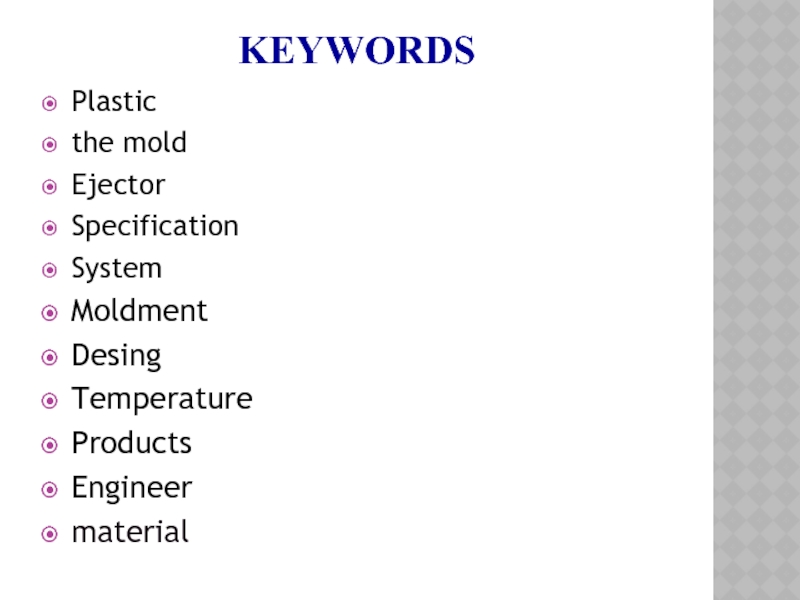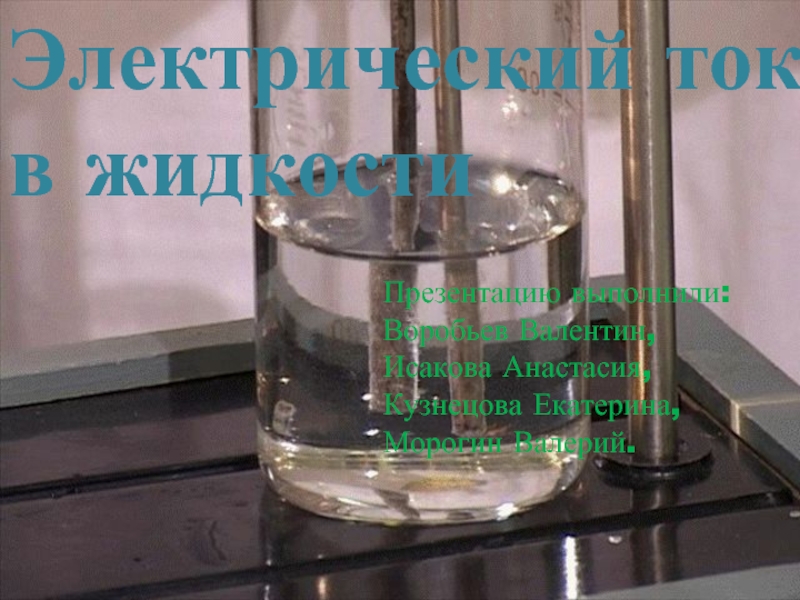Vladimirsky State University
Vladimir, 2016
- Главная
- Разное
- Дизайн
- Бизнес и предпринимательство
- Аналитика
- Образование
- Развлечения
- Красота и здоровье
- Финансы
- Государство
- Путешествия
- Спорт
- Недвижимость
- Армия
- Графика
- Культурология
- Еда и кулинария
- Лингвистика
- Английский язык
- Астрономия
- Алгебра
- Биология
- География
- Детские презентации
- Информатика
- История
- Литература
- Маркетинг
- Математика
- Медицина
- Менеджмент
- Музыка
- МХК
- Немецкий язык
- ОБЖ
- Обществознание
- Окружающий мир
- Педагогика
- Русский язык
- Технология
- Физика
- Философия
- Химия
- Шаблоны, картинки для презентаций
- Экология
- Экономика
- Юриспруденция
Desing of plastic products презентация
Содержание
- 1. Desing of plastic products
- 2. The times we live in are often
- 3. UNLIKE METALS, THE PROPERTIES OF MOST PLASTICS
- 4. WHAT DOES THIS MEAN TO THE DESIGN
- 5. OTHER EXPOSURES CAN CAUSE PROBLEMS WITH PLASTIC
- 6. THAT IS NOT TO SUGGEST ANY SKULLDUGGERY
- 7. EVEN IF THE MATERIAL MAINTAINED ITS PROPERTIES
- 8. NONETHELESS, THE FACT THAT PLASTIC PARTS CAN
- 9. BASIC DESIGN CONSIDERATIONS In order to avoid
- 10. A CERTAIN DEGREE OF RISK IS INHERENT
- 11. PROCESS SELECTION Plastics product designers are primarily
- 12. PROCESS SELECTION Beyond the fundamental design
- 13. As a broad statement, processes that
- 14. The product design engineer is, therefore, keenly
- 15. One may presume that the larger and/or
- 16. DESIGN FOR MULTIPLE PART ASSEMBLIES The first
- 17. DESIGN FOR MULTIPLE PART ASSEMBLIES That involves
- 18. DESIGN FOR MULTIPLE PART ASSEMBLIES The thermoplastic
- 19. Deviations from drawing tolerances can be approved
- 20. PLASTICS SPECIFICATIONS AND DRAFTING PRACTICES The number
- 21. The draft specification controls the way the
- 22. The draft specification will also control the
- 23. EJECTOR LOCATIONS Ejection devices for plastic parts
- 24. However, ejectors cost money and leave
- 25. THE STRIPPER PLATE IS A VARIETY OF
- 26. Parts from processes in which material flows
- 27. The material specification is, perhaps, the most
- 28. The pressure for substitutions arises from market
- 29. REGRIND LIMITATION Thermoplastics are capable of nearly
- 30. The engineer should be alert to the
- 31. CONCLUSION There are several aspects of plastics
- 32. TEXT OF PRESENTATION 1) The times we
- 33. 6) Even if the material maintained its
- 34. TEXT OF PRESENTATION 11) Beyond the fundamental
- 35. TEXT OF PRESENTATION 16) That involves the
- 36. TEXT OF PRESENTATION 23) However, ejectors cost
- 37. QUESTIONS 1) Во сколько раз увеличился объем
- 38. QUESTIONS 10) Из каких трёх взаимосвязанных компонентов
- 39. QUESTIONS 16) Для чего нужно установление тождественности
- 40. QUESTIONS 24) Что такое выталкивающая плита? 25)
- 41. KEYWORDS Plastic the mold Ejector Specification System
- 42. REFERENCES 1. Cadillac Plastic & Chemical Co.,
- 43. THANK YOU!
Слайд 1DESING OF PLASTIC PRODUCTS
Compiled by: Titova E.Yu., Gr. ХТмп-116
Supervisor: professor
Слайд 2The times we live in are often known as the “Computer
Слайд 3UNLIKE METALS, THE PROPERTIES OF MOST PLASTICS VARY CONSIDERABLY WITHIN NORMAL
Слайд 4WHAT DOES THIS MEAN TO THE DESIGN ENGINEER? BASICALLY, IT MEANS
It cannot be assumed that the product will survive the temperatures endured in cleaning, shipping, or storage unscathed.
Слайд 5OTHER EXPOSURES CAN CAUSE PROBLEMS WITH PLASTIC COMPONENTS AS WELL. ULTRAVIOLET
Слайд 6THAT IS NOT TO SUGGEST ANY SKULLDUGGERY ON THE PART OF
Слайд 7EVEN IF THE MATERIAL MAINTAINED ITS PROPERTIES THROUGHOUT THE PRODUCT’S TEMPERATURE
Слайд 8NONETHELESS, THE FACT THAT PLASTIC PARTS CAN BE SUCCESSFULLY DESIGNED IS
Слайд 9BASIC DESIGN CONSIDERATIONS
In order to avoid unpleasant surprises which can cause
Слайд 10A CERTAIN DEGREE OF RISK IS INHERENT IN PLASTICS DESIGN BECAUSE
Слайд 11PROCESS SELECTION
Plastics product designers are primarily interested in the ability of
Слайд 12PROCESS SELECTION
Beyond the fundamental design requirements, cost becomes the most
Слайд 13 As a broad statement, processes that require a higher initial
Слайд 14The product design engineer is, therefore, keenly interested in the volume
Слайд 15One may presume that the larger and/or more complex the part,
Слайд 16DESIGN FOR MULTIPLE PART ASSEMBLIES
The first step is to ensure that
Слайд 17DESIGN FOR MULTIPLE PART ASSEMBLIES
That involves the determination of the fitments
Слайд 18DESIGN FOR MULTIPLE PART ASSEMBLIES
The thermoplastic processes generally operate with a
Слайд 19Deviations from drawing tolerances can be approved if they turn out
Слайд 20PLASTICS SPECIFICATIONS AND DRAFTING PRACTICES
The number or letter should be located
Слайд 21The draft specification controls the way the mold is built as
Слайд 22The draft specification will also control the location of the parting
Слайд 23EJECTOR LOCATIONS
Ejection devices for plastic parts can range from screwdrivers used
Слайд 24 However, ejectors cost money and leave marks on the surface
Слайд 26Parts from processes in which material flows in the mold nearly
Слайд 27The material specification is, perhaps, the most critical of all the
Слайд 28The pressure for substitutions arises from market conditions. Material shortages and
Слайд 29REGRIND LIMITATION
Thermoplastics are capable of nearly 100% material utilization by regrinding
Слайд 30The engineer should be alert to the fact that the use
Слайд 31CONCLUSION
There are several aspects of plastics specifications and drawings (or files)
Слайд 32TEXT OF PRESENTATION
1) The times we live in are often known
2) Unlike metals, the properties of most plastics vary considerably within normal operating temperatures. A particular acrylonitrile butadiene styrene (ABS) whose tensile strength is 5500 lb/in2 at room temperature can drop to 2800 lb/in2 at 125°F. Other properties are also affected. For example, brittleness increases as the temperature drops, etc.
3) What does this mean to the design engineer? Basically, it means there will be more work to do. It cannot be assumed that the product will survive the temperatures endured in cleaning, shipping, or storage unscathed.
4) Other exposures can cause problems with plastic components as well. Ultraviolet light causes or catalyzes chemical degradation in many resins. Plastics are vulnerable to attack from many chemicals, particularly in heavy concentrations. Some are even affected by water and there is one, polyvinyl acetate, that actually dissolves in water (for example, soap, packets).
5) That is not to suggest any skullduggery on the part of the test engineers; it is simply that the standard test sample and conditions are narrowly defined and likely to be significantly different from those to be endured by any specific product. The values obtained for most plastics will vary according to the process, gating, wall thickness, rate of loading, etc. It should be noted that there is some latitude within the test procedures themselves which can affect results. Most plastics engineers use the data sheets principally for the purposes of comparison in material selection.
Слайд 336) Even if the material maintained its properties throughout the product’s
7) Nonetheless, the fact that plastic parts can be successfully designed is attested to by the wide variety of products in the marketplace. It is clearly, however, more work to design in plastic and it is virtually impossible to perfectly predict the initial results. That is the reason prototypes are frequently made. It is tempting to test a fabricated sample before constructing tooling.
8) In order to avoid unpleasant surprises which can cause a design to fail, it is necessary to know everything possible about the conditions which the product will be exposed to in its lifetime. Armed with that information, the plastics designer can determine if the design, material, process, and tooling are appropriate for the application.
9) A certain degree of risk is inherent in plastics design because the cost in time and resources is too great to permit the accumulation of enough information to eliminate that risk. Higher levels of risk are acceptable where tooling investment is low and where product failure results only in very low levels of property loss. As the cost of failure increases, more resources are devoted to risk reduction and greater safety factors are used. When product failure could result in serious injury or loss of life, exhaustive testing and greater safety factors are employed.
10) Process selection. Plastics product designers are primarily interested in the ability of a given process to produce the shape they require. Therefore, the processes have been grouped according to their ability to produce a given shape. The groupings are 1)thermoplastic open shapes; 2)thermoset open shapes; 3)hollow parts; 4)profiles; 5)ultra high strength.
TEXT OF PRESENTATION
Слайд 34TEXT OF PRESENTATION
11) Beyond the fundamental design requirements, cost becomes the
12) As a broad statement, processes that require a higher initial investment in tooling produce parts at a lower cost. This is largely due to the fact that the reduced part cost is the product of faster molding cycles. Faster cycles require pressure on the plastic to reduce the time required to fill the mold cavity. The greater the pressure, the stronger the tooling and the more sophisticated the processing equipment must be. Both of these are factors which increase the initial investment.
13) The product design engineer is, therefore, keenly interested in the volume at which the additional investment would be justified by reduced part cost. It would simplify the decision making tremendously if it were possible to determine that point in terms of a given volume for each process. That might be feasible if all parts were identical in shape and size.
14) One may presume that the larger and/or more complex the part, the greater the investment will be. As the investment grows, the production volume must be greater in order to pay the difference with lower piece part costs within an acceptable time period.
15) Design for multiple part assemblies. The first step is to ensure that the parts fit together properly—not merely at room temperature, but at the temperature extremes of what the product may be expected to encounter. For example, a force fitment that works perfectly at room temperature may loosen at elevated temperatures or fracture at low temperatures.
Слайд 35TEXT OF PRESENTATION
16) That involves the determination of the fitments after
17) The thermoplastic processes generally operate with a cool mold, with the moldment remaining in the tool until the part is rigid enough to withstand the forces of ejection. If the part is ejected while it is too hot, it can be distorted and dimensional control lost.
18) Deviations from drawing tolerances can be approved if they turn out to be excessively tight when the actual parts are available. When parts are accepted with deviations from the contract drawing, a written record should be retained and the drawing should be altered accordingly to reflect the newly approved tolerance. Regardless of how it is specified, the objective remains the same, namely, that the parts must fit together readily and stay together within acceptable parameters.
19) Plastics specifications and drafting practices. The number or letter should be located in a place where it will not interfere with a fitment or the appearance of the part, each cavity must contain an identification number—location to be approved by engineering.
20) The draft specification controls the way the mold is built as the direction of draft normally indicates the direction of draw (removal of the part from the tool) since reverse draft would be an undercut condition.
21) The draft specification will also control the location of the parting line, which should be indicated.
22) Ejector locations. Ejection devices for plastic parts can range from screwdrivers used to pry parts out of a hand mold to mechanized stripper plates and elaborate mechanisms which also retract collapsible cores.
Слайд 36TEXT OF PRESENTATION
23) However, ejectors cost money and leave marks on
24) The stripper plate is a variety of ejection system which need not leave a mark on the part.
25) Parts from processes in which material flows in the mold nearly always have knit lines and these knit lines will be the weak points in the part.
26) The material specification is, perhaps, the most critical of all the specifications. A material deviation can lead to a variety of problems in the molding of the part, its properties, and its performance, both short and long term.
27) The pressure for substitutions arises from market conditions. Material shortages and price increases force processors to seek means of relief. They will sometimes offer an “equivalent” material. Equivalent is, however, an ambiguous term when referring to plastics. It cannot mean precisely the same resin because resins are covered by patents and, therefore, each one is somewhat different than the others in its behavior and properties.
28) Regrind limitation. Thermoplastics are capable of nearly 100% material utilization by regrinding sprues, runners, and reject parts and mixing that “regrind” in with virgin resin. However, the material suffers some degradation when it is raised to elevated temperatures.
29) The engineer should be alert to the fact that the use of regrind runs the risk of contamination of the resin from a variety of sources. If a contaminant will pose a significant risk for the application (medical product) or if the need for all of the physical properties is critical, it may be necessary to prohibit the use of regrind.
30) Conclusion. There are several aspects of plastics specifications and drawings (or files) which are particular to this family of materials and processes and which deal with realities which must be addressed.
Слайд 37QUESTIONS
1) Во сколько раз увеличился объем производства пластмассы?
2) В чем отличие
3)Что нельзя предполагать при переработке продукта?
4)Что вызывает ультрафиолетовый свет в полимерах?
5)Что используют большинство инженеров - специалистов при выборе материала?
6)Что требуется в производстве, когда нужна повышенная точность?
7)Для чего нужно знать всё об условиях, которые действуют на продукт?
8)Почему присуща определенная доля риска при конструировании изделия из пластмассы?
9)Как подразделяются процессы в соответствии с их способностью производить заданную форму?
Слайд 38QUESTIONS
10) Из каких трёх взаимосвязанных компонентов состоит стоимость продукта?
11) Почему в
12) Что означает «сложный процесс» в качественных пластиковых окнах?
13) Как работают с термопластичными процессами?
14) Когда могут быть утверждены отклонения от чертежа и допуск?
15) Что делать, когда части приняты с отклонениями от чертежа?
Слайд 39QUESTIONS
16) Для чего нужно установление тождественности объекта при построении более чем
17) Как должны располагаться цифры или буквы на чертеже?
18) Какие могут быть стенки в эскизе?
19) К чему может привести не правильный эскиз?
20) На что влияет способ построения пресс-формы в эскизе спецификации?
21) Что позволяет контролировать эскиз в чертеже детали?
22) Как происходит выталкивание устройств из пластиковых деталей?
23) Общая черта всех выталкивателей?
Слайд 40QUESTIONS
24) Что такое выталкивающая плита?
25) Почему допускается выталкивание в более нагретую
26) Как можно определить хорошие сварные швы?
27) К чему может привести отклонения материала?
28) Что заставляет производителей искать материал дешевле?
29) На что влияет несоответствие в спецификации?
30) Дробленый материал повышает или понижает физические свойства материала?
Слайд 41KEYWORDS
Plastic
the mold
Ejector
Specification
System
Moldment
Desing
Temperature
Products
Engineer
material
Слайд 42REFERENCES
1. Cadillac Plastic & Chemical Co., Troy, Mich.
2. Terry A.
3. John L. Hull, "Design and Processing of Plastic Parts," Handbook of Plastics Elastomers and Composites, 2d ed., Charles A. Harper, ed., McGraw-Hill, New York, 2001. – P.83.
4. J. 0. Trauernicht, "Bonding and Joining, Weigh the Alternatives, Part 1, Solvent Cements, Thermal Welding," Plastics Technology, August 1999. – P.147.
5. "Engineer's Guide to Plastics," Materials Engineering, May 2002. – P. 369.
6. "Mechanical Fastening," Handbook of Plastics Joining, Plastics Design Library, Norwich, NY, 2001. – P.259.
7. "Joining of Composites," in A. Kelley, ed., Concise Encyclopedia of Composite Materials, The MIT Press, Cambridge, 1999. – P. 247-269.
8. D. K Rider, "Which Adhesives for Bonded Metal Assembly," Product Engineering, May 25, 2001. – P. 299-300.
9. "Surface Preparation of Plastics," in Adhesives and Sealants, vol. 3, Engineered Materials Handbook, H. F. Binson, ed., ASM International, Materials Park, Ohio, 2004. – P. 169.

